Arduino is featured in the November issue of Wired.
Check out the full article here:
The Arduino team has released a new version of the awesome Arduino platform called Arduino Duemilanove. Improvements include automatic selection of USB vs. external power, header pins for RESET and 3.3V supply, and an easy to cut automatic-RESET-disable trace.
The wiki page includes a very helpful audio sample to demonstrate proper pronunciation of the new name.
This is the second part of an ongoing series about building a low cost, open source streaming internet radio. if you haven’t already, check out part one for some background about the project.
In part one, I discussed the merits of streaming internet radio and the motivations for my Wifi Radio project. Now it’s time to start looking at what hardware can make this project a reality. Before we get started, let’s review the requirements list from last time.
Requirements:
There are two additional requirements that I implied in the first post but forgot to include explicitly:
How do these requirements translate into hardware? Let’s take a stab at what features we’d like in an embedded platform.
The size and cost aspects pushed me towards an embedded system instead of a small form factor PC like any of Shuttle’s XPC offerings or a nano-ITX board. To me, “Ease of development” equals Linux, so I wanted something well supported by Linux and an active open source development community.
There are quite a few embedded Linux platforms out there, with a wide variety of prices and features. I looked at a few of them, including:
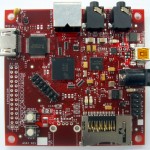
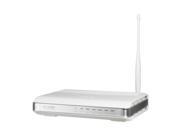
Tiny, under $50 and with built-in wireless, the Asus WL-520GU is the clear winner for this project. The downside? Since this router was never intended to do anything other than, well, route, we’re going to have to crack it open, modify it, and void the warranty. In addition, there is no tech support and we’re going to have to spend some extra time hacking around to get it to do what we want.
Here it is in all it’s glory:
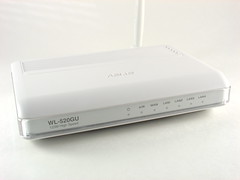
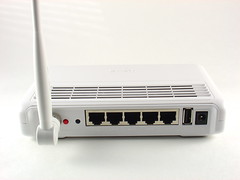
Here’s a sneak peak of the inside:
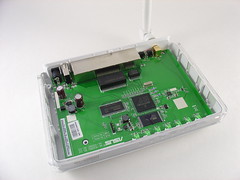
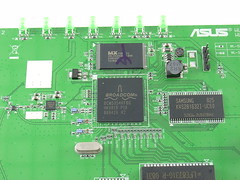
This router is supported by OpenWRT, an open source Linux distribution for small embedded devices. Ignore the work-in-progress designation, it works, trust me!
Although the router lacks builtin audio, that is easily solved with an $8 SYBA SD-CM-UAUD USB Stereo Audio Adapter. There have been reports that the WL-520GU only supports USB 1.1 reliably, but USB audio doesn’t require USB 2.0 so it’s not an issue for us. For full USB 2.0 support, look at the WL-500gP v2 instead.
So far we have $58 into the project ($38 if you are lucky enough to get the rebate) and we have an embedded Linux computer, a wireless interface, and an audio output. Not bad!
That’s it for part two! In part three I’ll install a serial port on the router and get ready to reflash the stock firmware with OpenWrt. At that point we’ll be able to start listening to some tunes!
Update: I posted detailed specs for the WL-520GU and a couple more photos here.
Update 2: I posted some images of the $8 USB-Audio Adapter I am using as well.
Update 3: Part three is now available.
Update 4: There is a new Wifi Radio Discussion Forum, hop over there to ask questions about the project or see what other people are working on! (4/12/09)
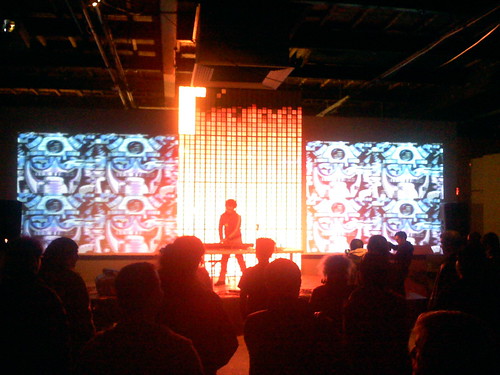
Alex Mauer performing at Blip ’07.
Blip Festival 2008: The Promo from Richard Alexander Caraballo on Vimeo.
Blip Festival 2008 is coming up in just a few weeks, on December 4-7th, in Brooklyn, New York. The Blip Festival is a yearly event in NYC promoted by The Tank, a performing arts space in lower Manhattan. Last year was truly epic and featured many prominent artists in the 8-bit/lo-fi music scene, including Alex Mauer, Bitshifter, and my new favorite 8-bit artist, Markus Schrodt.
Here’s a direct link to Markus Schrodt’s latest release, i amar prestar aen. All of his music is available for download here.
Buy your tickets now, make travel reservations, and I’ll see you in December at Blip!